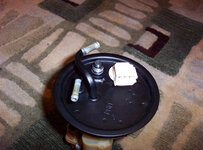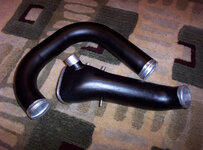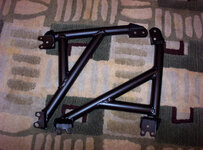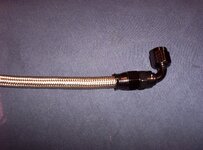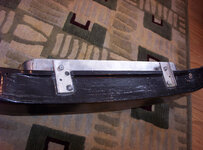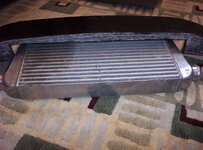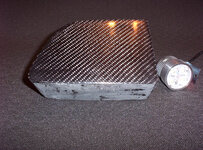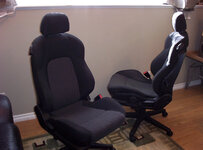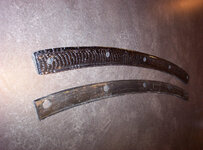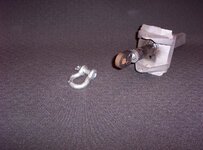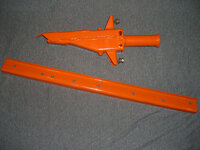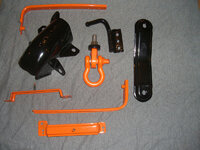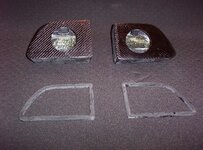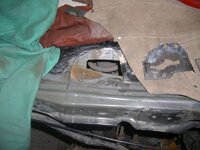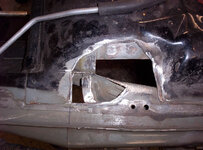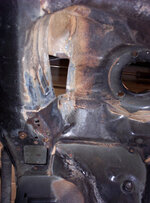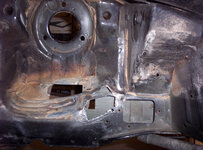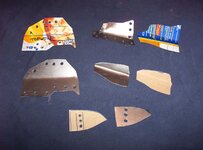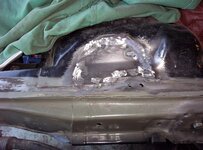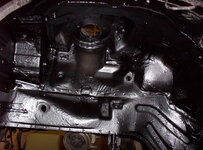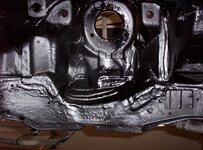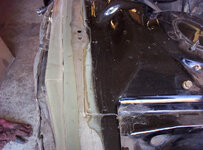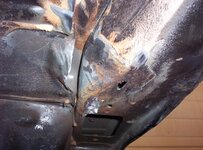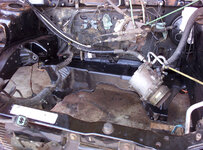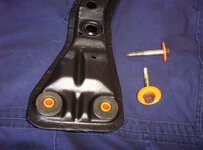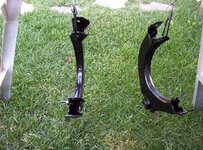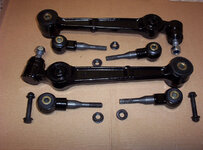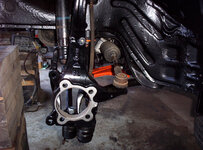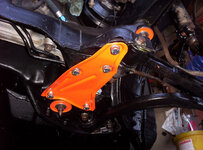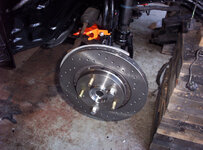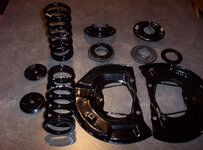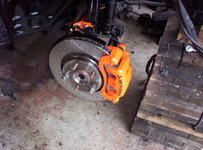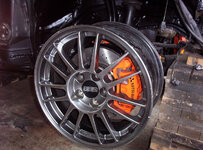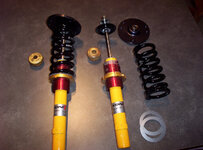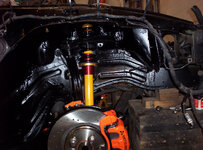- Thread starter
- #51
pksystems
20+ Year Contributor
- 677
- 136
- Nov 9, 2003
-
Calgary,
AB_Canada
Finished modifying the catch cans. I still need to RTV the lid/bottom on, but that can wait till I figure out the orientation I'd like of the outlet port on the lid.
I was originally planning on leaving both in/outlets on the lid. I couldn't figure out a way to feed the inlet gases into the lower section of the tank, and still be able to get the lid on. I figured I'd use some rubber fuel safe hose, pushed through a hole on the top platform. I cancelled that idea when I rubbed the outer surface of the hose with some acetone (more corrosive then gas) and black color was coming off the hose like crazy. Since this hose would be contained entirely inside the can I figured it would dissolve away eventually.
Since I dropped the idea of a sight tube, I decided to move the inlet to the top sight hole. The inlet fumes are now in a completely different chamber then the outlet. Male 1/4 NPT to Female 3/8 NPT adapter was JBwelded into the top port, after retapping to 1/4 NPT. There is no restriction in this adapter. Bottom hole is sealed up with what is left of the original fitting. Hole in it was filled with JBweld/powdercoated. Also JBWelded into place.
I decided to use Stainless scrubbers as a filter media. They are held higher up in the can with some aluminum dividers. Vapours have to go through the scrubber, down, around the center divider, and back up the other side. Through another SS scrubber, and then through the small holes drilled on the upper platform. Fumes are then in the original lid. The outlet port can be installed on the opposite side of the holes, right next to the inlet, forcing fumes to take another turn. Some of the fumes can get around the center divider. Short of gluing it into the can there was no way around this. The inside of the can has bumps for attaching the lids tho, so I made sure the center section is infront of one, and behind the bump on opposite side. Even if they get around the center divider, they still need to go through the small holes to get to the outlet.
Aluminum, Brass fittings, Stainless scrubbers and water/oil/fuel vapours. Galvanic corrosion waiting to happen. To hopefully stop this, the baffle assembly is JBwelded, then riveted together. Then I coated the rivets with more JBweld. Then I gave it a light sandblast to ensure there was nothing loose that could break off. Acid etched, then powdercoated.
After double checking how the PCV system flows air, I JBwelded some SS mesh over the inside of the intake port. I looks like fumes may be pulled back into the valve cover, and on the off chance that any of my SS scrubbers break apart, I don't want them going into the engine.
Anyway, very easy to see what I've come up with in the picture.
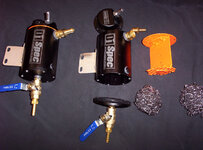
I was originally planning on leaving both in/outlets on the lid. I couldn't figure out a way to feed the inlet gases into the lower section of the tank, and still be able to get the lid on. I figured I'd use some rubber fuel safe hose, pushed through a hole on the top platform. I cancelled that idea when I rubbed the outer surface of the hose with some acetone (more corrosive then gas) and black color was coming off the hose like crazy. Since this hose would be contained entirely inside the can I figured it would dissolve away eventually.
Since I dropped the idea of a sight tube, I decided to move the inlet to the top sight hole. The inlet fumes are now in a completely different chamber then the outlet. Male 1/4 NPT to Female 3/8 NPT adapter was JBwelded into the top port, after retapping to 1/4 NPT. There is no restriction in this adapter. Bottom hole is sealed up with what is left of the original fitting. Hole in it was filled with JBweld/powdercoated. Also JBWelded into place.
I decided to use Stainless scrubbers as a filter media. They are held higher up in the can with some aluminum dividers. Vapours have to go through the scrubber, down, around the center divider, and back up the other side. Through another SS scrubber, and then through the small holes drilled on the upper platform. Fumes are then in the original lid. The outlet port can be installed on the opposite side of the holes, right next to the inlet, forcing fumes to take another turn. Some of the fumes can get around the center divider. Short of gluing it into the can there was no way around this. The inside of the can has bumps for attaching the lids tho, so I made sure the center section is infront of one, and behind the bump on opposite side. Even if they get around the center divider, they still need to go through the small holes to get to the outlet.
Aluminum, Brass fittings, Stainless scrubbers and water/oil/fuel vapours. Galvanic corrosion waiting to happen. To hopefully stop this, the baffle assembly is JBwelded, then riveted together. Then I coated the rivets with more JBweld. Then I gave it a light sandblast to ensure there was nothing loose that could break off. Acid etched, then powdercoated.
After double checking how the PCV system flows air, I JBwelded some SS mesh over the inside of the intake port. I looks like fumes may be pulled back into the valve cover, and on the off chance that any of my SS scrubbers break apart, I don't want them going into the engine.
Anyway, very easy to see what I've come up with in the picture.


Last edited:



